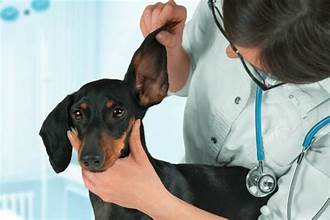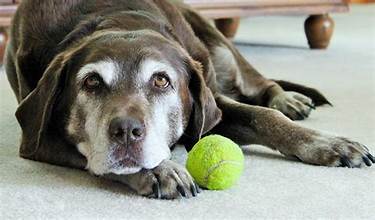Caring for a deaf dog is a rewarding experience but requires adjustments to help your pet live a happy and healthy life. Whether your dog was born deaf or lost hearing later in life, several considerations must be made regarding diet, activity, home modifications, and medical care.
Understanding Deafness in Dogs
Deafness in dogs can be congenital (present at birth) or acquired (due to age, injury, or illness). Some breeds, such as Dalmatians, Bull Terriers, and Australian Shepherds, are more prone to congenital deafness. Understanding the cause of your dog’s deafness is crucial as it can help tailor its care to its specific needs.
Dietary Considerations
Deafness itself does not typically require a special diet. However, maintaining overall health and providing a balanced diet that meets your dog’s nutritional needs is crucial. Here are some tips:
1. High-Quality Dog Food:
Choose a dog food with meat as the first ingredient and free from artificial additives and fillers.
2. Supplements:
Consider supplements such as Omega-3 fatty acids for brain health and joint supplements if your dog is older.
3. Hydration:
Ensure your dog always has access to fresh water.
4. Regular Feeding Schedule:
Feeding them on a schedule will help your dog reduce stress.
Activity Level and Exercise
Deaf dogs require regular exercise, just like any other dog. However, communication during activities will be different. Here are some tips to keep your deaf dog active and engaged:
1. Hand Signals:
Train your dog using hand signals instead of verbal commands. Consistency is key.
2. Vibration Collars:
These collars can get your dog’s attention during off-leash activities without causing harm.

3. Safe Environment:
Always exercise your dog in a safe, enclosed area to prevent them from getting injured.
4. Interactive Toys:
Use toys that engage your dog’s other senses, such as those that make noise or have different textures.
Home Modifications
Making your home deaf-dog-friendly involves a few modifications to ensure safety and comfort:
1. Visual Cues:
Use visual cues like lights or hand signals to communicate with your dog.
2. Secure Fencing:
Ensure your yard is fenced to prevent your dog from wandering off.

3. Eliminate Hazards:
Remove potential hazards that could risk your dog if they cannot hear them.
4. Comfortable Sleeping Area:
Provide a comfortable area where your dog feels safe and secure.
Medical
Regular veterinary care is essential for all dogs, but it is particularly important for deaf dogs. This care monitors your dog’s overall health and any potential issues related to deafness, ensuring it remains healthy and happy.
1. Regular Check-Ups:
Regular veterinary check-ups are essential to monitor your dog’s overall health and any potential issues related to deafness.
2. Ear Infections:
Deaf dogs can still suffer from ear infections, so regular ear cleaning and monitoring are essential.
3. Specialist Consultations:

If your dog’s deafness is part of a broader health issue, consultations with specialists might be necessary.
4. Behavioral Health:
Deaf dogs sometimes experience anxiety or behavioral issues. Working with a professional trainer experienced with deaf dogs can be beneficial.
Socialization and Training
Training and socialization are crucial for a well-adjusted deaf dog. Here are some strategies:
1. Positive Reinforcement:
Treats and praise are good rewards for good behavior.
2. Hand Signals:
Consistently use hand signals for commands such as sit, stay, come, and down.
3. Desensitization:
Gradually expose your dog to new experiences to prevent anxiety.
4. Socialization:
Regularly socialize your dog with others to ensure they remain well-adjusted and friendly.
Conclusion
Caring for a deaf dog involves understanding their unique needs and adjusting to your routine and environment. With the proper care, training, and love, your deaf dog can lead a happy, fulfilling life. By focusing on their dietary needs, providing adequate exercise, making necessary home modifications, and ensuring regular medical care, you can create a safe and loving home for your deaf companion.





Pingback: The Best Way To LearnWhat Your Dog’s Saying - Positvley Pets